Are you looking to take your skiing skills to the next level? Tackling steep slopes can be intimidating, but with the right techniques and tips, you can master even the most challenging terrain. In this guide, we’ll provide you with essential strategies to build your skills and boost your confidence when skiing on steep terrain.
One of the most important things to keep in mind is that skiing steep slopes requires practice and persistence. Don’t be afraid to challenge yourself and push beyond your comfort zone. With a little determination and the right mindset, you’ll be skiing down thrilling descents in no time.
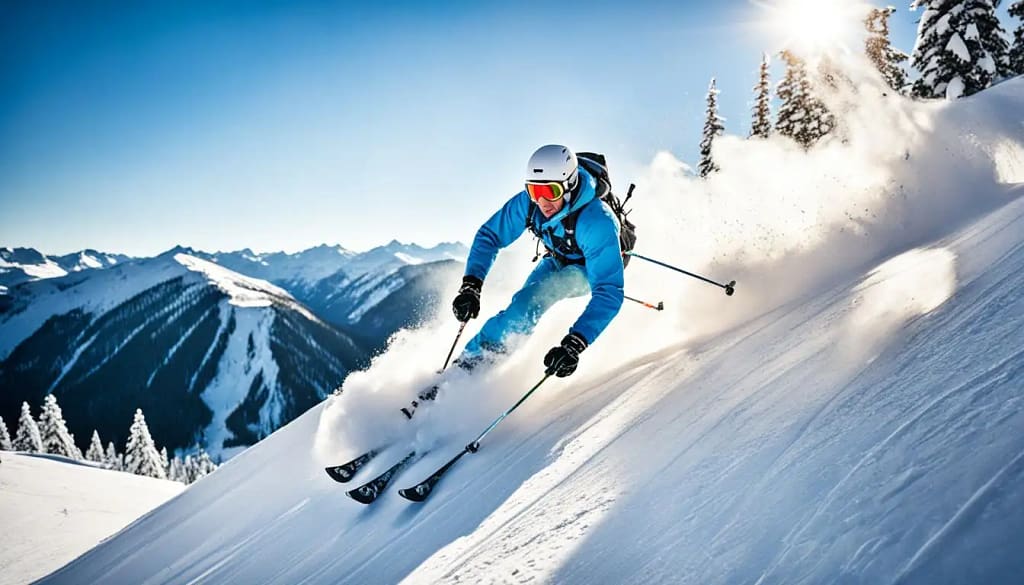
A skier carving down a steep slope, surrounded by snow-capped mountains and trees. The skier is leaning forward and holding their ski poles close, with the snow spraying behind them. The slope is littered with bumps and moguls, indicating a challenging run. The sky is clear and blue, with the sun shining brightly down on the scene.
Key Takeaways:
- Mastering steep skiing takes practice and persistence.
- Understanding the challenges of steep terrain is crucial for success.
- Proper body position and balance are essential for skiing steep slopes.
- Controlling speed and turns is key to staying safe on steep terrain.
- Choosing the right line and mental preparation are also crucial for success.
Table of Contents
Understanding Steep Slopes
Before embarking on skiing steep slopes, it’s essential to master the techniques required for navigating steep terrain. Steep slopes pose unique challenges such as rapid acceleration, difficult turning, and maintaining control. To ski steep terrain safely and comfortably, you need to learn to control your speed and your body position accurately.
Effective speed control is a vital aspect of skiing steep slopes. One of the most effective ways to accomplish this is to master the art of carving, which entails making precise turns while creating minimal friction between skis and snow. Mastering carving can take time, but with patience and practice, you can learn this essential skill.
Another critical aspect of skiing steep slopes is maintaining appropriate body alignment and balance. You need to stay balanced on your skis while skiing, starting with distributing your weight evenly, maintaining the correct stance, and focusing on proper technique.
| Techniques for skiing steep terrain: | Benefits: |
|---|---|
| Carving turns | Effective speed control, minimal friction between skis and snow |
| Keeping weight evenly distributed on your skis | Better balance, more control, higher speed control |
| Proper body position | Better balance, more efficient turns, safer descents |
To navigate challenging terrain, your technique is crucial. As you progress from intermediate to advanced skiing, it is crucial to focus on proper stance and technique. This can involve engaging your core muscles to maintain upper body stability, which will enable you to make confident turns and maintain speed control while skiing steep slopes.
Ultimately, skiing on steep slopes requires a mix of courage, skill, and proper technique. With patience, practice, and guidance from experienced professionals, you can conquer even the steepest of slopes.
Body Position and Balance
When skiing down steep hills, maintaining balance and correct body position becomes even more crucial for a safe and enjoyable descent. The proper form and weight distribution are necessary to stay in control while tackling the steepest descents.
The first and foremost thing to keep in mind is to keep your body weight balanced over the downhill ski while keeping your upper body facing downhill and your shoulders square.
- Pro-tip: Trust your ski edges and hold your weight over them. This will ensure a strong grip on the slope, providing you with added stability and control.
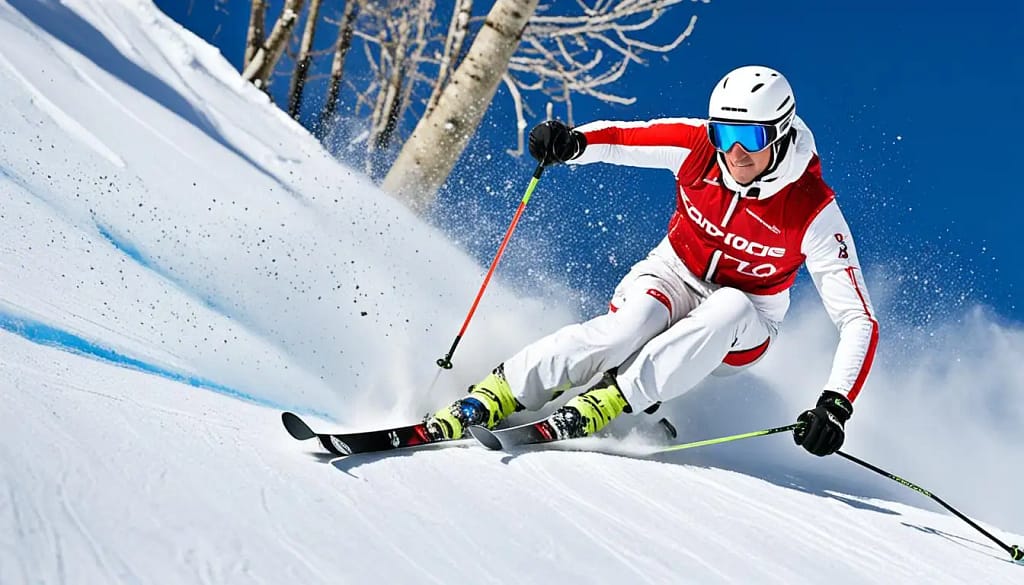
Show a skier demonstrating proper body position and balance while skiing down a steep slope. The skier’s knees should be bent, weight centered over the downhill ski, arms forward and slightly out for balance, and eyes focused on the path ahead. The slope should be depicted as challenging and steep, with various obstacles such as rocks or trees in the background. The image should convey a sense of control and confidence in the skier’s technique, while also highlighting the excitement and thrill of skiing steep terrain.
Another crucial factor is to maintain an athletic stance which means flexing your joints to give your body a strong sturdy profile and facilitate quick reflex movements.
- Pro-tip: Keep your knees bent and relaxed and stay in an athletic stance with your weight slightly forward, this will help you avoid any backseat skier position and keep you in control of your skis.
It’s essential to keep your centre of gravity close to the skis and to ensure you’re evenly distributing your weight across both skis.
| Weight Distribution | Technique |
|---|---|
| Even | Balanced and in control |
| Too much on uphill ski | You may catch an edge and fall on the downhill side |
| Too much on downhill ski | You may accelerate too fast and lose control |
With the right body position and balance, you’ll be able to tackle even the steepest slopes with confidence and skill.
Controlling Speed and Turns
Skiing steep trails requires precise control of your speed and turns to navigate safely through challenging terrain. To help you ski steep slopes with confidence, we’ve put together some tips and techniques for honing your skills.
1. Manage Your Speed
When skiing on steep terrain, it’s crucial to keep your speed under control to avoid accidents. One technique to manage your speed is to take wider turns, which increases resistance and slows you down. Another useful tip is to focus on the bottom of the slope, which can help you anticipate upcoming obstacles.
2. Execute Precise Turns
Turning on steep slopes requires mastery of techniques such as carving and skidding. Carving involves placing weight on the downhill ski and using the edges to make clean turns. Skidding, on the other hand, involves sliding your skis in a sideways motion to control your speed and direction.
3. Build Confidence
Confidence is crucial when skiing steep slopes, and the best way to build it is through practice. Start on less steep terrain and gradually work your way up to steeper slopes, practicing your speed control, turning, and body positioning until you feel confident on challenging terrain.
“It’s not about conquering the mountain, but rather conquering yourself.” – Laird Hamilton
By mastering the art of controlling your speed and turns, you’ll gain confidence and enjoy skiing steep trails to the fullest.
Choosing the Right Line
When you’re skiing on difficult slopes or steep trails, choosing the right line is crucial. By taking the time to analyze the terrain, you can identify the safest and most enjoyable path down the mountain. To do this, start by reading the mountain and studying the snow conditions. Are there any obstacles or hazards you need to be aware of? Is the snow hard-packed or icy?
Once you have a good understanding of the terrain, look for the most direct and gradual line down the mountain. Avoid traversing unnecessarily or choosing a path that is too steep for your skill level, which can endanger yourself and others. Additionally, don’t forget to take into consideration factors such as visibility and wind conditions when choosing your line.
Remember to always prioritize safety and choose a line that you’re comfortable skiing. By selecting the right line, you can maximize your safety, enjoyment, and overall skiing experience.

Show a skier conquering a steep slope by choosing the perfect line. The skier is in control, smoothly carving their way down the mountain with confidence. The backdrop is a snowy mountainscape with trees and other skiers visible in the distance. The skier’s body language should convey their skill and mastery of skiing difficult terrain. Use shades of blue and white to represent the snow and create a sense of movement in the image.
Tips for Choosing the Right Line:
- Read the mountain and study the snow conditions
- Look for the most direct and gradual line down the mountain
- Avoid traversing unnecessarily or choosing a path that is too steep for your skill level
- Consider visibility and wind conditions when selecting your line
Mental Preparation
Skiing steep slopes can be daunting, but with the right mental preparation, you can tackle them with confidence. To begin mastering steep skiing, start by overcoming your fear. Acknowledge your concerns and then adopt a positive attitude, visualizing yourself conquering the slopes with ease.
Visualization is an excellent technique to help you build confidence when skiing on steep terrain. Before your descent, take the time to visualize yourself skiing down the trail smoothly and successfully. Use your imagination to see yourself executing turns and controlling your speed with finesse.
Another effective strategy for mental preparation is to break the terrain down into smaller sections. Focus on skiing just one section at a time, and then tackle the next. This will help you to stay present and not become overwhelmed by the entire trail.
Remember to stay relaxed and focused throughout your descent. Take deep breaths and maintain a clear and positive mindset. With practice and determination, you’ll soon be conquering steep terrain with ease.
Adjusting Equipment and Gear
When it comes to skiing steep slopes, having the right equipment and gear can make all the difference. By making some simple adjustments, you can optimize your skiing experience and enhance your performance on the mountain.
Bindings
Bindings play a crucial role in the performance and safety of your ski equipment. You want to ensure that your bindings are set correctly to match your height, weight, and ski ability level. Improperly adjusted bindings can lead to accidents, so it’s essential to have them professionally set by a certified technician.
- Tip: Check your bindings before every ski trip to ensure they are still properly adjusted and that there are no cracks or other damage.
Ski Width
The width of your skis is another important factor in skiing on steep terrain. Narrower skis are better suited for firmer conditions, while wider skis offer more surface area for better flotation on powder days. If you’re skiing steep trails, it’s best to choose skis with a width of 90mm or more.
Boots
Your boots are the most critical piece of equipment for skiing steep slopes. They need to fit well and provide enough support to your feet, ankles, and lower legs. Make sure your boots have a stiff flex rating, which will give you more control and precision on steep terrain.
- Tip: Invest in a good pair of ski boots that fit snugly, provide excellent support, and have adjustable features for customization.

Create an image of a person adjusting their ski bindings, with their skis and poles leaning against a nearby tree. Show the person wearing ski boots and goggles, and include details of the bindings and the tree bark. The scene should convey a sense of preparation and readiness for skiing steep slopes.
Ski Poles
Ski poles are an often-overlooked piece of equipment, but they can be incredibly beneficial when skiing on steep terrain. They can provide additional balance and stability, help you maintain proper form, and assist in initiating turns. Make sure your ski poles are the correct length, extending from the ground to your armpit when you hold them upside down.
Helmet and Goggles
Don’t forget about your helmet and goggles, which are crucial for safety and visibility. Choose a helmet with a snug and comfortable fit, and make sure your goggles provide clear vision in all light conditions. Additionally, consider wearing a neck gaiter or balaclava to protect your face and neck from the wind and cold.
- Tip: Always wear a helmet when skiing on steep terrain. It only takes one fall to cause a serious injury, and a helmet can make all the difference.
By making some simple gear and equipment adjustments, you can optimize your skiing experience on steep slopes. Remember to invest in high-quality equipment, have your bindings professionally adjusted, and check your gear regularly for any damage or wear and tear. With the right gear and equipment, you’ll be skiing down those steep hills with ease.
Practicing and Progressing
Mastering the techniques for skiing steep terrain and skiing down steep hills requires consistent practice and progressive learning. Whether you’re a beginner or an advanced skier, it’s essential to develop your skills over time to increase your confidence and ability to conquer ever steeper descents.
Drills and exercises are an excellent way to improve your skiing skills, strengthen your muscles and reflexes, and gain a better sense of control and balance on steep slopes. Consider incorporating the following exercises into your routine to enhance your performance:
| Exercise | Description |
|---|---|
| Side slips | Practice turning your skis while sliding sideways down a slope, focusing on maintaining an even edge angle across both skis. |
| Pivot slips | Slide down a slope while turning your upper body and skis in opposite directions, aiming to keep your upper body facing downhill while your skis face across the slope. |
| Dynamic short turns | Alternate your turns, making short, quick turns while keeping your upper body facing downhill and your skis facing across the slope. Focus on maintaining your rhythm and speed while turning. |
| Parallel turns on steep terrain | Practice parallel turns on moderate to steep terrain, focusing on maintaining proper form and balance while controlling your speed. |
Remember to practice on progressively steeper slopes as your skills improve, always focusing on maintaining control, balance, and speed management. Be patient, take breaks as needed, and don’t be afraid to seek guidance from experienced instructors or skiers to hone your skiing skills even further.
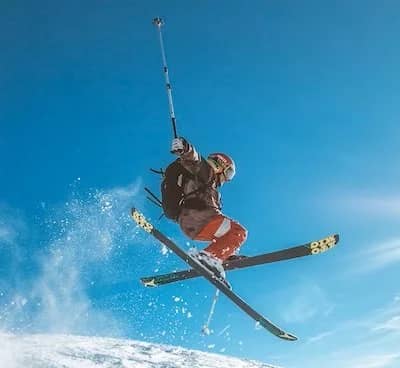
5 Hidden Alpine Treasures: Most Enchanting Ski Resorts in Europe
Unveil the charm of Europe’s lesser-known ski resorts in our guide to hidden Alpine paradises. From serene slopes to[…]

5 Key Balance Exercises for Superior Ski Performance
Discover 5 crucial balance exercises for skiing to improve stability and performance on the slopes. Enhance your skiing experience
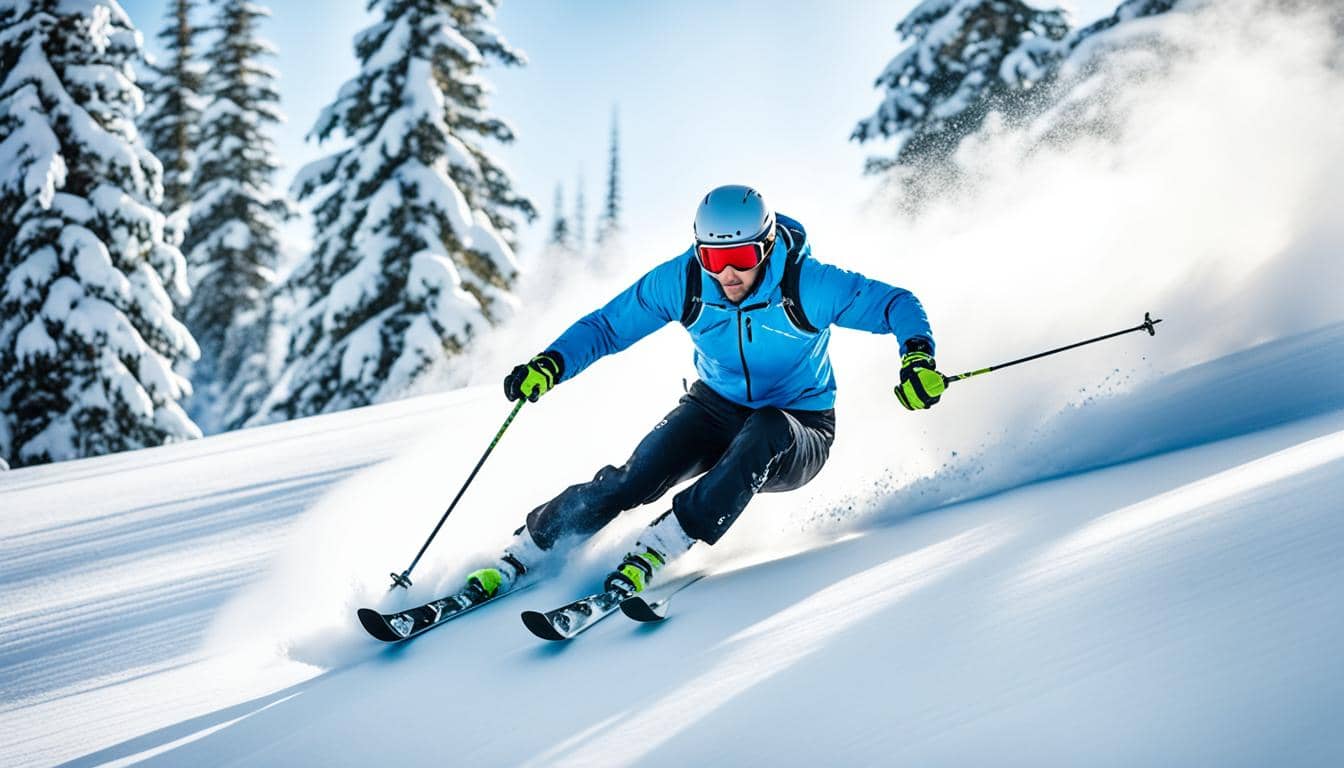
Alpine vs Nordic Skiing: Choose Your Slope Style
Explore the thrill and grace of the slopes as we delve into alpine vs nordic skiing – find out[…]
Conclusion
Congratulations, now you have a comprehensive guide to help you conquer the challenging slopes. By following these tips and techniques, you’ll be well on your way to mastering the art of skiing on steep terrain. Remember to always prioritize safety and never exceed your abilities.
Whether you’re a beginner or an experienced skier, practicing and progressing is key to improving your skills. So, keep practicing the drills and exercises mentioned in this guide, and gradually build up your confidence to tackle ever steeper slopes.
Don’t forget about the importance of mental preparation and positive mindset to overcome fear and build confidence. And, make sure to adjust your equipment and gear to optimize your performances, including bindings and ski width.
Now, you’re ready to hit the mountains and apply the techniques for skiing steep terrain. Remember to always have fun and stay safe while enjoying skiing on difficult slopes.
FAQ
How can I ski steep slopes with confidence?
To ski steep slopes with confidence, it is important to follow these tips and techniques:
- Proper Equipment: Ensure your skis and boots are suitable for steep terrain. Stiffer boots and skis with a good grip can help in managing steep descents.
- Solid Foundation: Master the basics on less steep terrain first. You should be comfortable with parallel turns, speed control, and stopping on intermediate slopes before tackling steeper ones.
- Body Position: Keep your body centered over your skis. Lean slightly forward to keep your weight balanced. Avoid leaning back, as this can reduce your control.
- Focus on Technique: Practice short, controlled turns. This helps manage speed and maintains balance. Sharp, decisive turns are crucial on steep slopes.
- Pole Planting: Use your ski poles effectively. Planting your pole at the beginning of each turn can help with timing and rhythm, providing stability and balance.
- Look Ahead: Always look a few turns ahead instead of just at your skis. This helps in planning your line and anticipating changes in the terrain.
- Control Your Speed: Use a combination of turn shape and skidding to control speed. Don’t rush; it’s okay to take your time.
- Breathing: Maintain a regular breathing pattern. Holding your breath can increase tension and decrease focus.
- Confidence and Mental Preparation: Visualize your line down the slope before starting. Stay calm and confident. Anxiety can lead to stiff movements, which are less effective.
- Practice on Varied Terrain: Ski different types of slopes to become a versatile skier. This builds skills and confidence for steep terrain.
- Lessons from a Professional: Consider taking lessons from a qualified ski instructor. They can provide personalized tips and immediate feedback on your technique.
- Safety First: Always be aware of your surroundings and know your limits. If a slope feels beyond your current skill level, it’s okay to back down.
What are some techniques for skiing on steep terrain?
Techniques for skiing on steep terrain include:
- Short, Controlled Turns: Use quick, sharp turns to maintain control. This helps in managing both speed and direction.
- Pole Planting: A firm pole plant can provide rhythm and stability in your turns. It’s especially helpful in initiating turns on steep slopes.
- Edge Control: Use the edges of your skis effectively to grip the snow. This is key for controlling your descent.
How do I achieve the right body position and balance while skiing steep slopes?
Achieving the right body position and balance on steep slopes requires:
- Centered Stance: Keep your weight balanced over the middle of your skis. Avoid leaning too far back.
- Forward Stance: Slightly lean forward from your ankles and knees. This stance aids in effective edge control.
- Flexibility: Keep your knees and hips flexible to absorb variations in the terrain.
How can I control my speed and execute turns on steep slopes?
To control speed and execute turns effectively on steep slopes, follow these guidelines:
- Turn Shape: Wider, sweeping turns will help reduce speed, while shorter turns offer more control.
- Skidding vs. Carving: Skidding your turns can help in controlling speed on very steep slopes. Carving is more suited for less steep, groomed slopes.
- Speed Control: Regularly check your speed. Don’t let yourself gain too much momentum.
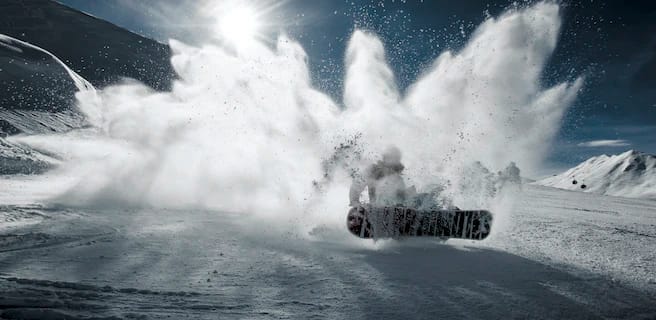
Which Challenges You More: Skiing vs. Snowboarding – Snow Rivalry Unveiled
Is skiing or snowboarding easier? Explore this in our guide comparing both, with expert insights and tips for beginners[…]
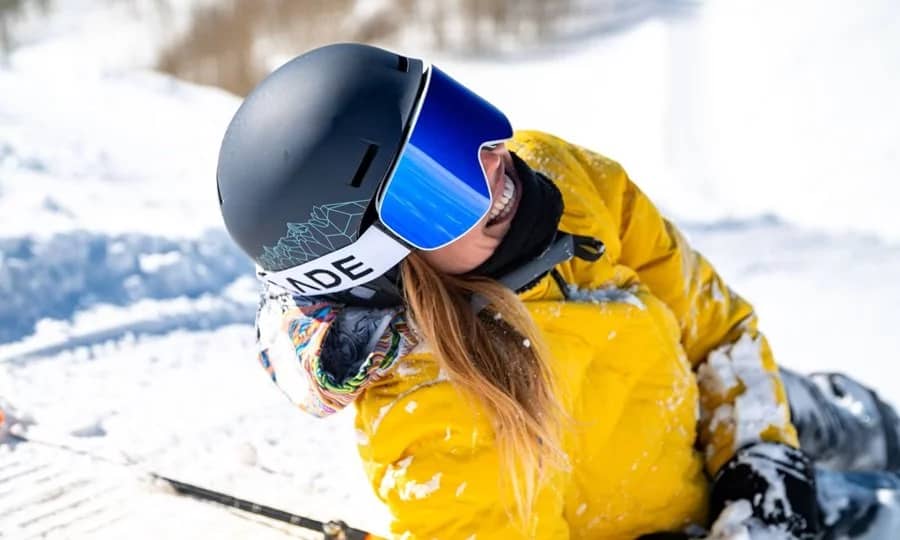
What to Wear Skiing First Time for Ultimate Comfort
Discover the essentials of what to wear skiing first time. Stay warm, dry, and safe with our comprehensive guide[…]
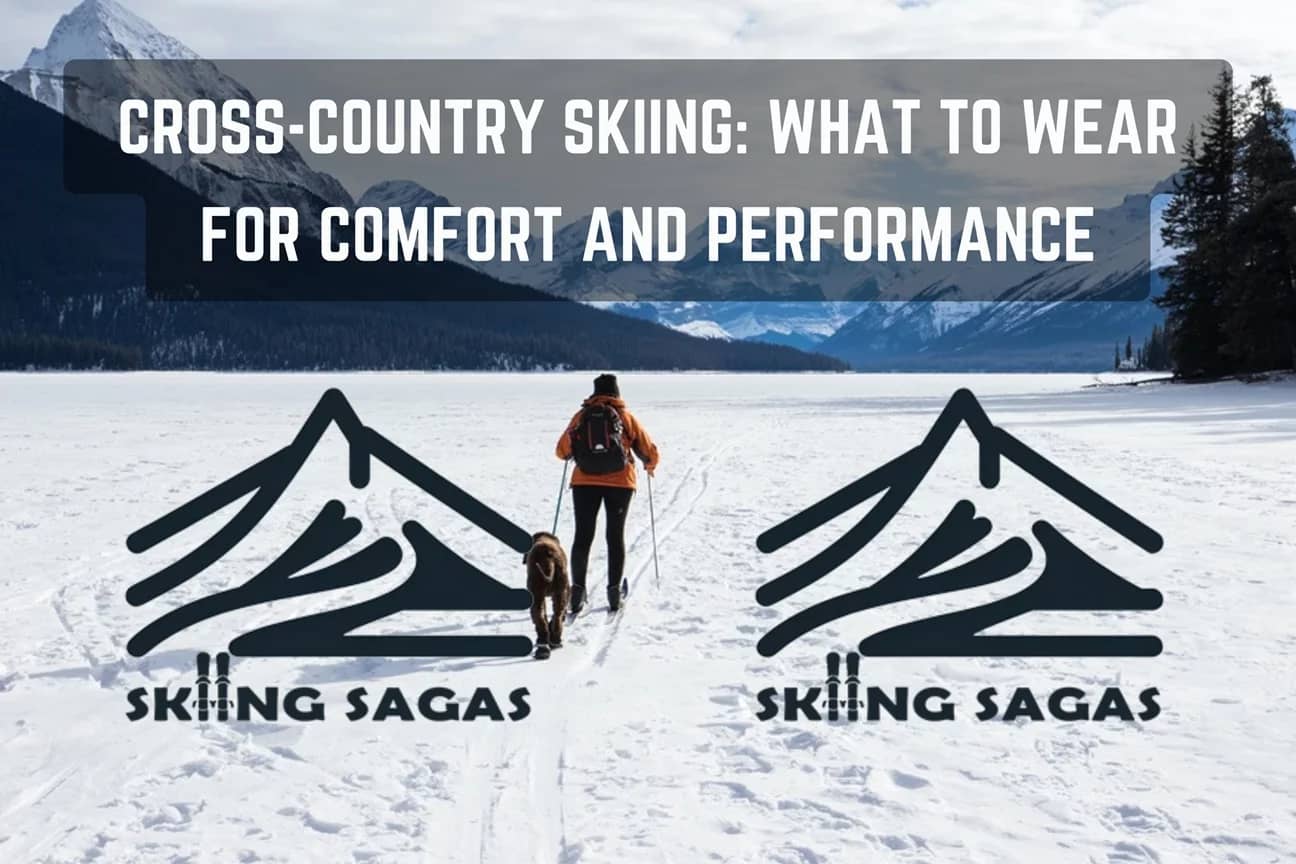
What to Wear Cross Country Skiing: Dress Right and Enjoy
Learn what to wear cross country skiing to stay warm and comfortable. Essential clothing tips for all levels of[…]
How can I mentally prepare myself for skiing steep slopes?
To mentally prepare for skiing steep slopes, consider these techniques:
- Visualization: Visualize your entire run before starting. Imagine each turn and how you will handle different sections.
- Confidence: Build confidence gradually by tackling progressively steeper slopes.
- Stay Calm: Practice deep breathing to keep calm. Anxiety can tighten muscles, leading to less fluid skiing.
Are there any gear adjustments that can enhance my performance on steep slopes?
Yes, here are some gear adjustments that can improve your performance on steep slopes:
- Ski Length and Width: Shorter skis can be easier to turn on steep slopes. Wider skis provide better stability.
- Boot Adjustments: Make sure your boots are snug. This improves responsiveness and control.
- Binding Settings: Ensure your bindings are correctly set for your skill level and weight.
What can I do to practice and progress my skiing skills on steep slopes?
To practice and progress your skiing skills on steep slopes, try these:
- Gradual Progression: Start with moderately steep slopes and gradually increase difficulty.
- Varied Terrain: Ski various types of terrain to build a broad skill set.
- Professional Instruction: Consider lessons focused on advanced techniques and steep terrain.
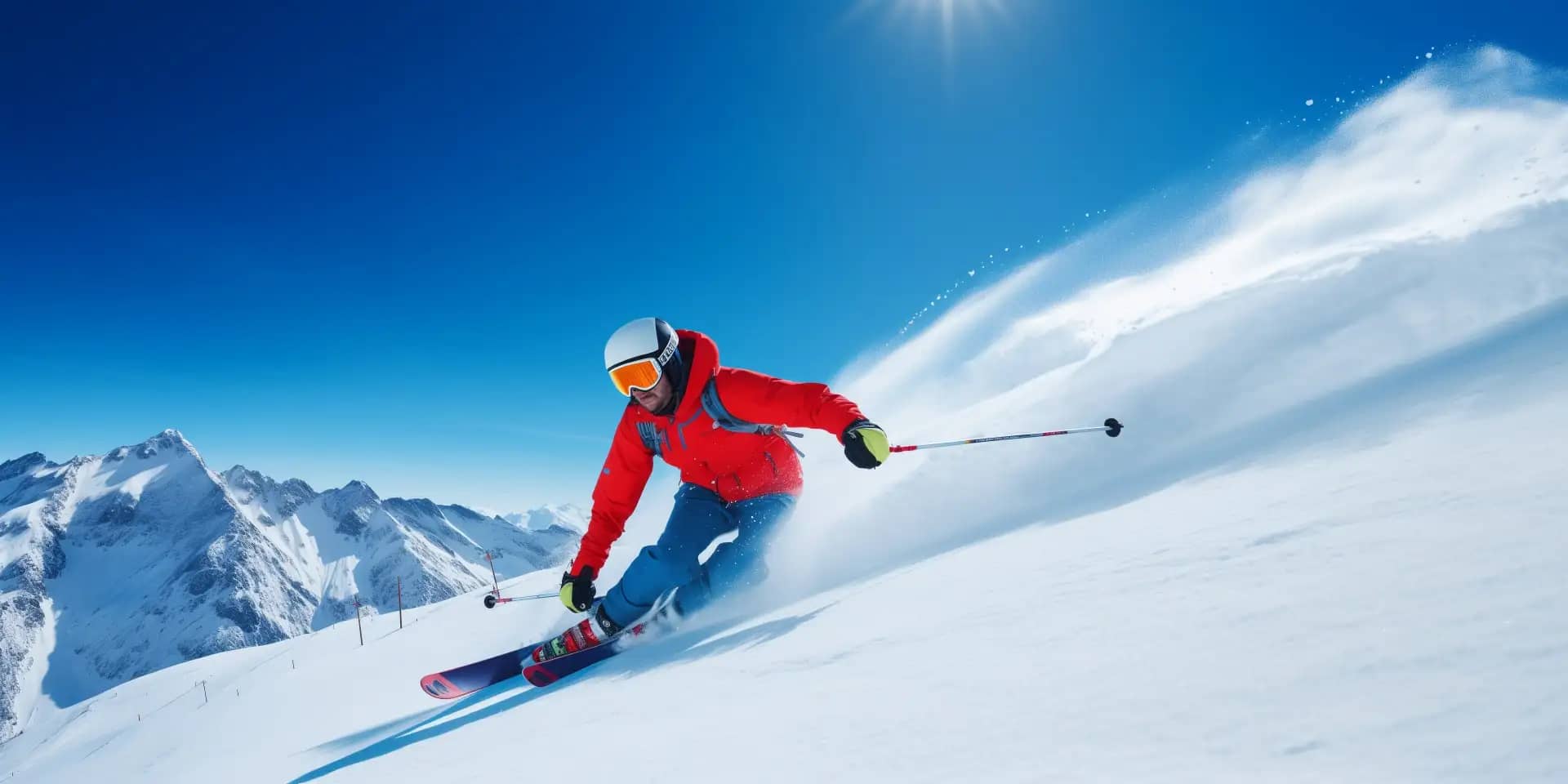




No responses yet